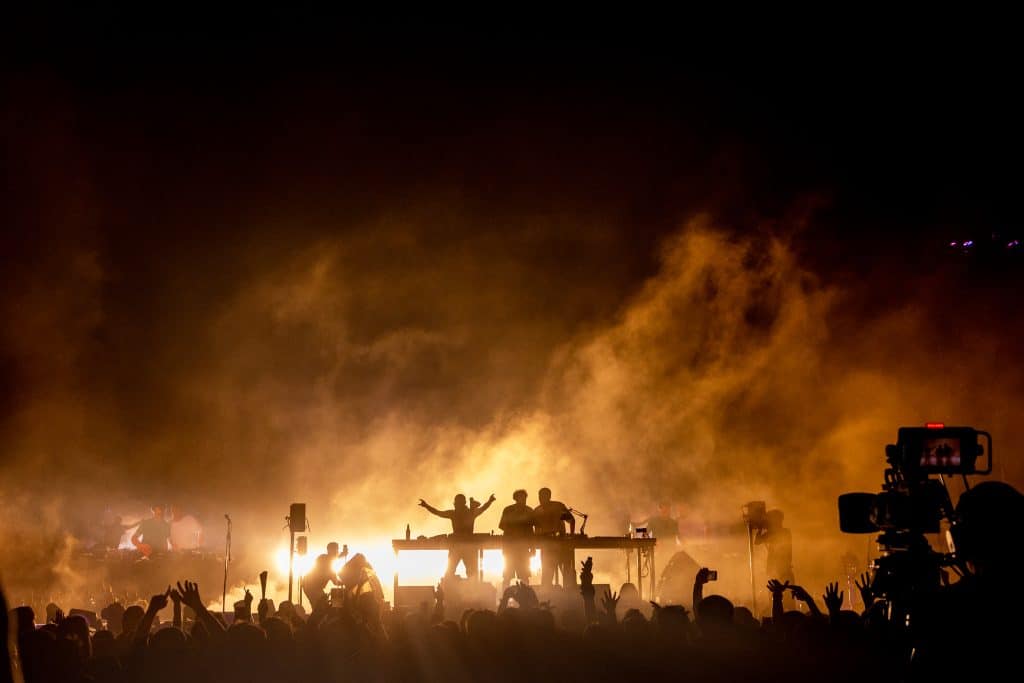Features
Dance Dance Revolution: Trends Point To Electronic Music Resurgence

Lee Anderson is still catching his breath from the whirlwind of events that led to Skrillex, Four Tet and Fred again.. closing out weekend two of Coachella. Frank Ocean had suddenly dropped out of the festival, which was now down a headliner. At the last minute, Anderson’s client Skrillex helped take over the spot, allowing for a late-night dance party that went down in history.
This wasn’t the first time dance music came in for a last-minute Coachella save. Swedish House Mafia and The Weeknd in 2022 stepped in after Ye, the artist formerly known as Kanye West, dropped out. What this did was signify a shift in global perception. Dance music is again returning from the fringes to the mainstream.
Within the past 18 months, Drake and Beyoncé released dance-driven albums. The IMS Business reported during the IMS conference in Ibiza last month that dance music’s global audience rose 34% in 2022. The genre is now worth $11.3 billion, according to the same report. Artists like John Summit and Fred again.. skyrocketed to success over the pandemic, taking high billing on festivals including Ultra Miami and Coachella. And big names who had previously been on hiatus, including Swedish House Mafia and Skrillex, came back not just in full force, but with a mission to push their careers even further.
“It’s been a narrative in the industry, like dance music’s dying,” Anderson, who serves as EVP and Managing Executive at Wasserman Music, tells Pollstar. “It’s not. It’s selling more tickets than anybody. Go look at the influence house music is having, just where it’s going, and it’s massive. There’s this huge thing going on in dance music that is totally under the radar and not in the press whatsoever.”
This new wave of dance music is scaling back on the immense productions that kept aiming for bigger and better ahead of the pandemic. Instead, the genre is returning to its roots of mixes focusing on the music more than anything else.
Skrillex, Four Tet and Fred again..’s April 23 Coachella performance perfected that. Following a set from a reunited blink-182, the trio utilized the elaborate ice rink contraption Frank Ocean had planned for his own performance. The stage allowed the three DJs to have a setup within the crowd for a high-energy dance party that created an immense buzz.
“When [this round of shows with Skrillex, Four Tet and Fred again..] first started, it was very raw.”
The Coachella performance followed an earlier string of dates that saw the three transform New York City for a weekend with a variety of pop-up performances including in Times Square and Madison Square Garden. Their show at The Garden, announced just a few days before taking place, wound up selling 15,412 tickets grossing $748,767, according to reports submitted to Pollstar’s Boxoffice. Much like their set at the festival, the shows featured minimal production. Anderson also shares he believes it signifies a shift in style for dance music, where the focus returns to the music and the experience.
“The reason Coachella worked was it all was accidentally set up to be exactly what that is,” Anderson says. “With everyone together, the music playing, the artists in the middle of this experience. We utilized the video, we brought in fireworks at the end, we had lasers. But you weren’t watching a dance music show. You were listening and enjoying a dance music experience, which is where I think it’s going now and how that just accidentally was set up so perfectly to make happen. I like being in live because you create moments. To me, that moment at Coachella is one of the greatest moments in the history of live music in America. Because all these accidents happened to create this perfect hour and a half of music and people coming together.”
Stephanie LaFera, partner and head of electronic music at WME, also recognizes the growing trend in dance music.
She notes that dance music has steadily become the largest genre represented at Coachella, making up nearly one-third of the festival’s lineup.
“That signals to us that there’s a real appetite from concert-goers to see both established and emerging electronic talent,” she tells Pollstar. “And it’s not just here in the States, we’re seeing massive growth in live electronic acts around the globe right now.”
Anderson notes that while dance music has a global audience, he has an easier time booking all of electronic music’s subgenres in the U.S. He shares that other countries have particular tastes, with client Zedd being more popular in Asia, house music more popular in Australia and Latin America and bass music stronger in Australia.
“What’s interesting about America is this is sort of the only continent where every subgenre of electronic music works,” he says. LaFera estimates the recent global growth of electronic music comes out of the pandemic.
All music genres have benefited from the “Great Return” since lockdowns lifted and touring resumed, and dance and electronic music is no exception. More festivals are continuing to book the genre, with some (including Outside Lands and Coachella) dedicating entire tents to for fans to dance in. Kaskade and deadmau5 have also seen historic numbers, their performance as Kx5 at Los Angeles Memorial Coliseum becoming the largest single-day concert event headlined by an electronic artist with 50,000 fans in attendance.
“The energy at an electronic concert felt like the perfect remedy to so many coming out of the pandemic, and that experience now serves as a joyful way to bring people together,” she says. “We’ve witnessed the increasing globalization of music across genres in recent years, and I would say that the electronic genre was really at the forefront of that due to its ability to transcend singular languages or cultures.”